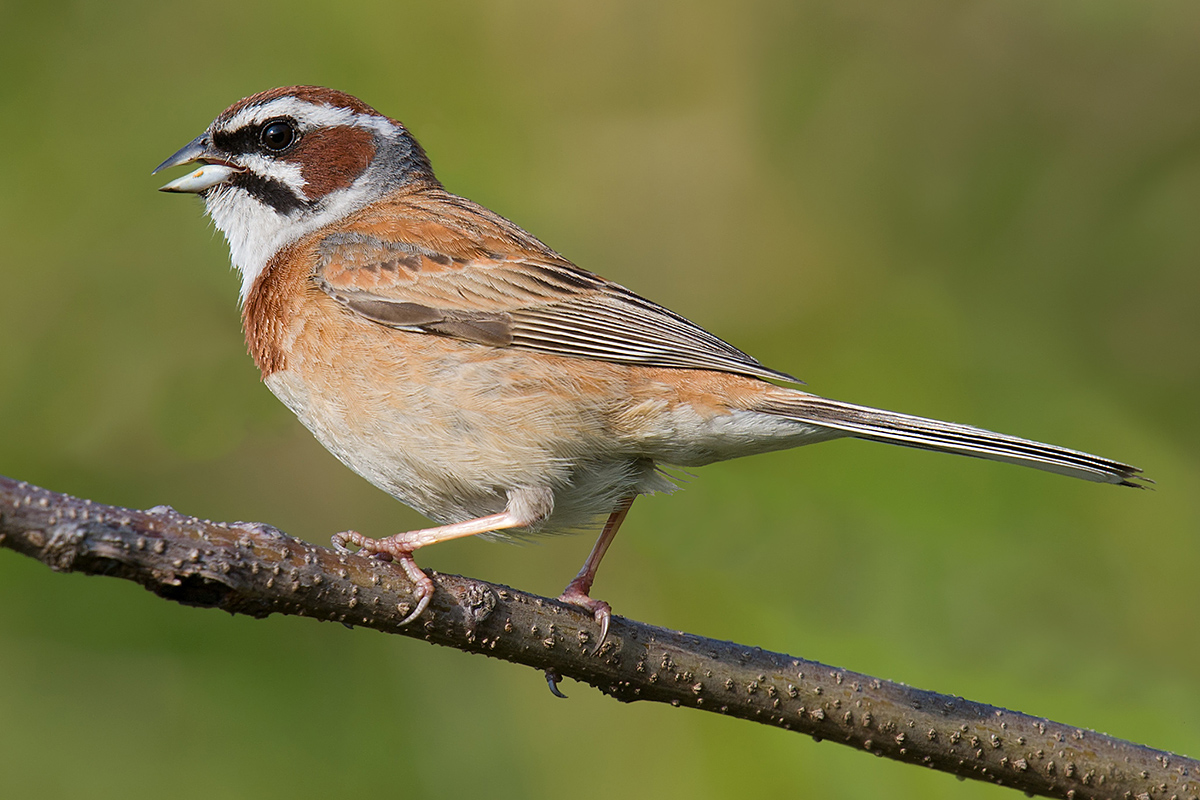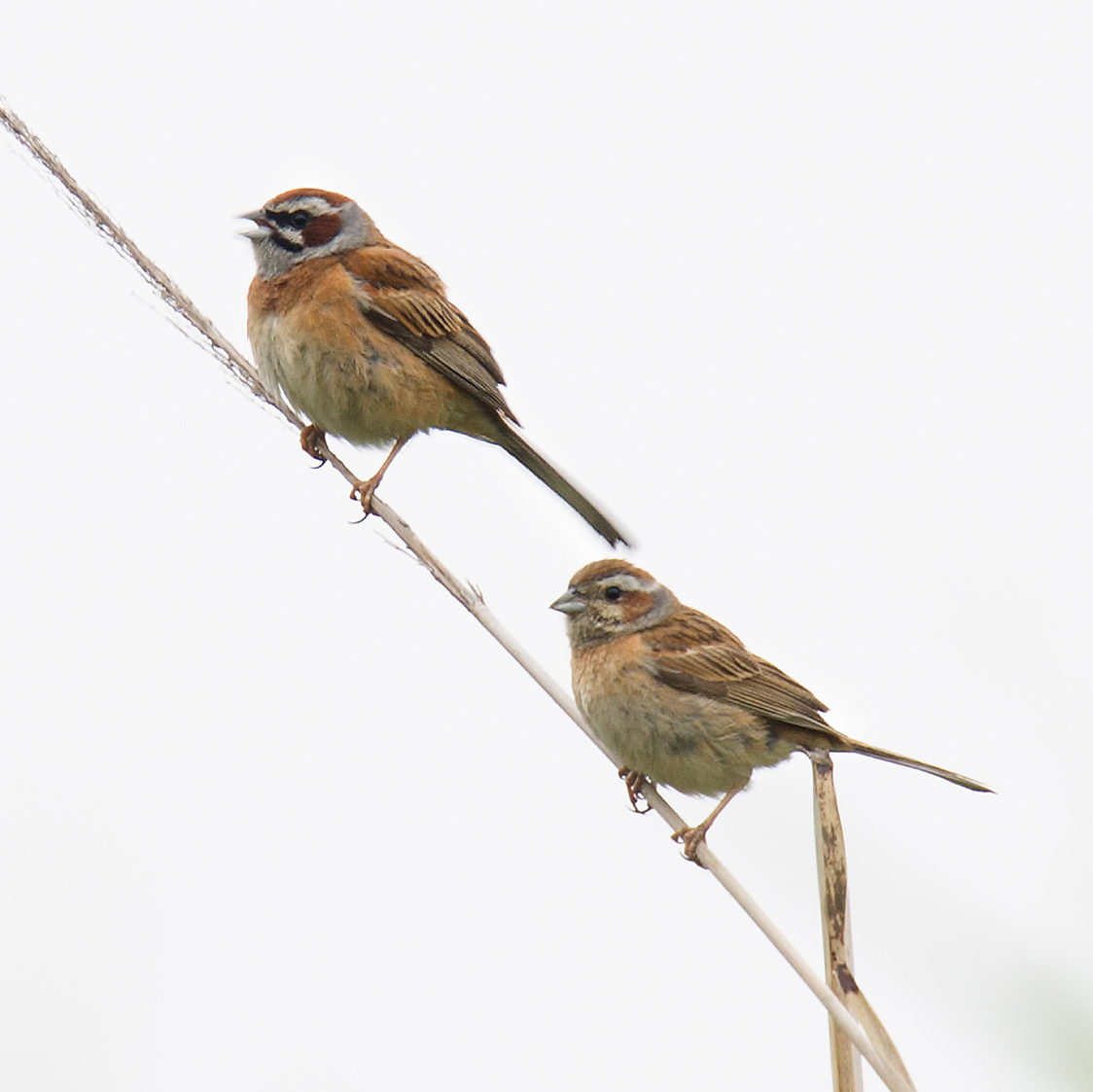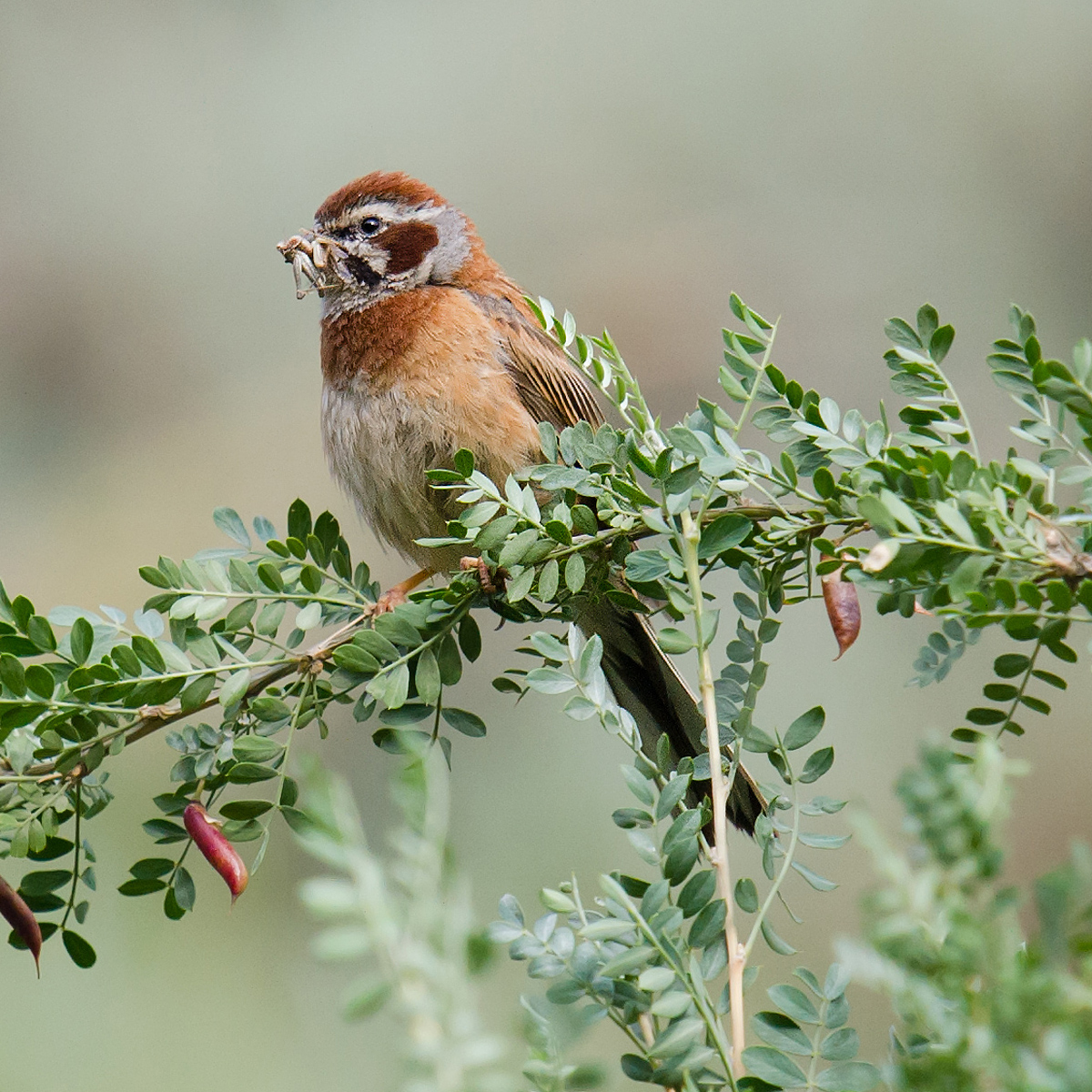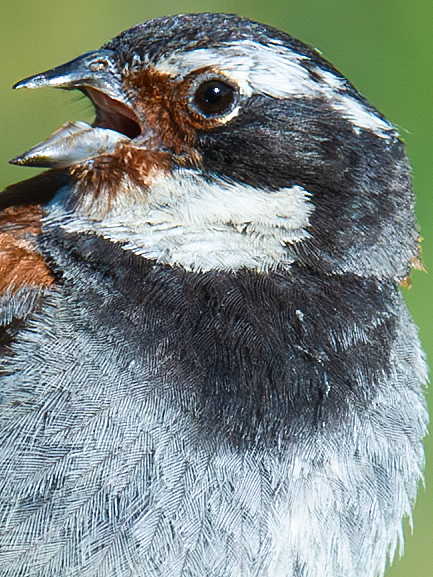


Meadow Bunting Emberiza cioides occurs throughout much of China, with weigoldi resident northeast China south to Hebei, castaneiceps south of weigoldi in central and eastern China (resident Lesser Yangshan Island, off coast of Shanghai), cioides Altai Mountains in Xinjiang and in eastern Qinghai, and tarbagataica in Tianshan in Xinjiang. HABITAT Less fussy about habitat than other buntings, breeding in lightly wooded hills, open scrub, and even near agricultural land—main requirement being thickets or dense grass for foraging and nesting. ID & COMPARISON Warm, mainly rufous-brown bunting with distinctive rufous, white, and black facial pattern. Has long, broad white supercilium extending to grey collar, white malar stripe, black lores and lateral throat stripe, and chestnut ear coverts and crown. Upperparts rufous-brown with faint brown streaking on mantle and unstreaked rump and uppertail coverts. Rufous and black tail shows white edges to outermost rectrices. Chin, throat white; breast band rufous, rest of underparts rufous grading to off-white on belly. Female paler, browner, with less striking facial pattern and more uniform buff underparts. Juvenile even duller than female and has fine streaking on head; very similar to juvenile Godlewski’s Bunting E. godlewskii. BARE PARTS Bill black above, grey below with black tip to lower mandible. Feet brownish-pink. VOICE Call a two- to four-note series: zit-zit-zit. Song, from utility wire or other prominent perch, a rapid burst lasting one to two seconds and repeated after a pause of equivalent length. — Craig Brelsford
SOUND-RECORDINGS
Meadow Bunting Emberiza cioides weigoldi, song, Dawucun (大五村, 45.713330, 130.591936), Heilongjiang, China, elev. 280 m (920 ft.), May, by Craig Brelsford (0:57; 3 MB)
Meadow Bunting Emberiza cioides castaneiceps, song, Lesser Yangshan Island, Zhejiang, China, April, by Craig Brelsford (0:56; 2 MB)
THE BUNTINGS OF CHINA
shanghaibirding.com has research on most of the buntings of China. Click any link:

Crested Bunting Emberiza lathami
Yellowhammer E. citrinella
Pine Bunting E. leucocephalos
Rock Bunting E. cia
Godlewski’s Bunting E. godlewskii
Meadow Bunting E. cioides
Jankowski’s Bunting E. jankowskii
Grey-necked Bunting E. buchanani
Ortolan Bunting E. hortulana
Tristram’s Bunting E. tristrami
Chestnut-eared Bunting E. fucata
Little Bunting E. pusilla
Yellow-browed Bunting E. chrysophrys
Rustic Bunting E. rustica
Yellow-throated Bunting E. elegans
Yellow-breasted Bunting E. aureola
Chestnut Bunting E. rutila
Tibetan Bunting E. koslowi
Black-headed Bunting E. melanocephala
Red-headed Bunting E. bruniceps
Yellow Bunting E. sulphurata
Black-faced Bunting E. spodocephala
Masked Bunting E. personata
Pallas’s Reed Bunting E. pallasi
Japanese Reed Bunting E. yessoensis
Common Reed Bunting E. schoeniclus
ACKNOWLEDGEMENTS
Daniel Bengtsson served as chief ornithological consultant for Craig Brelsford’s Photographic Field Guide to the Birds of China, from which this species description is drawn.
